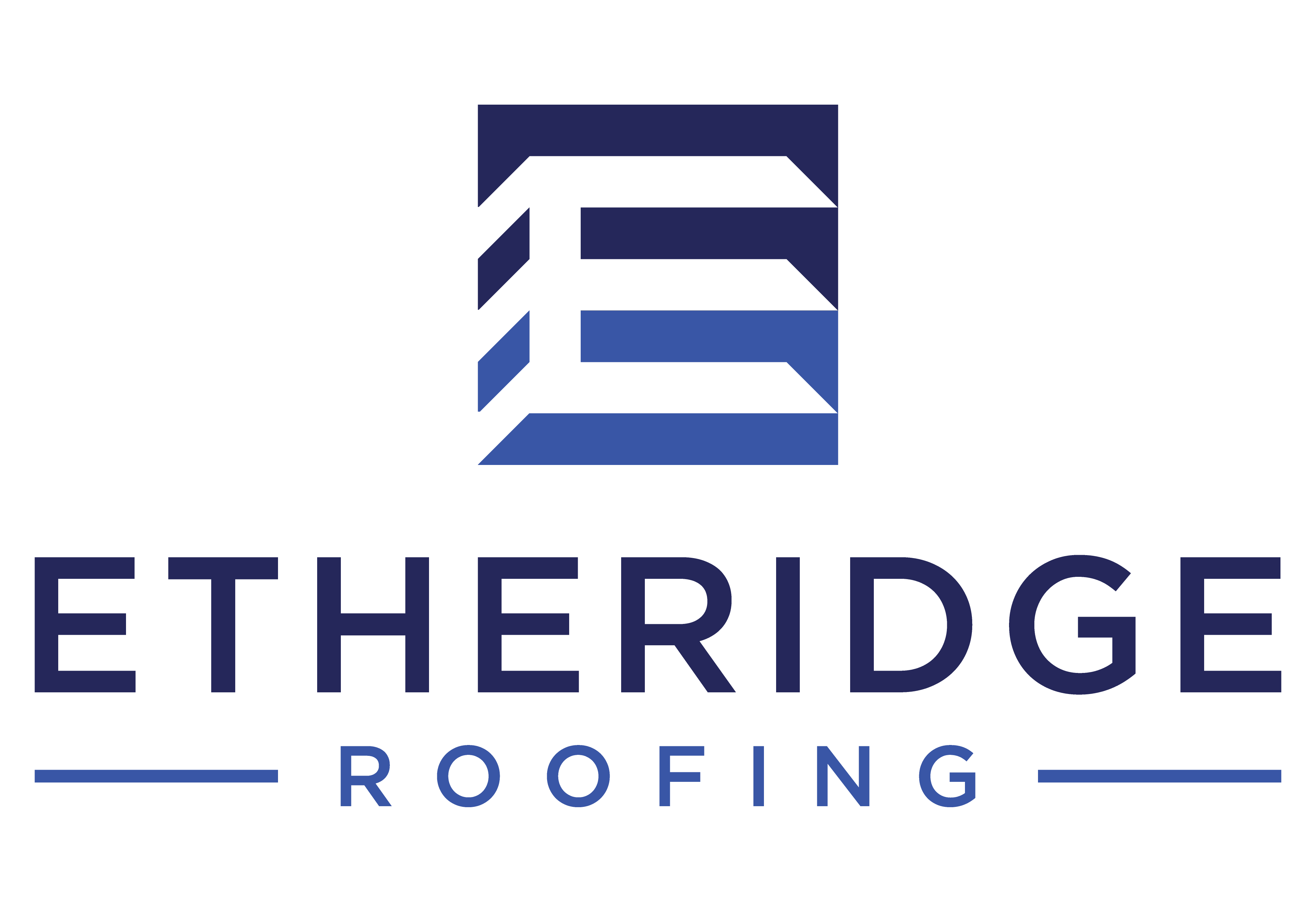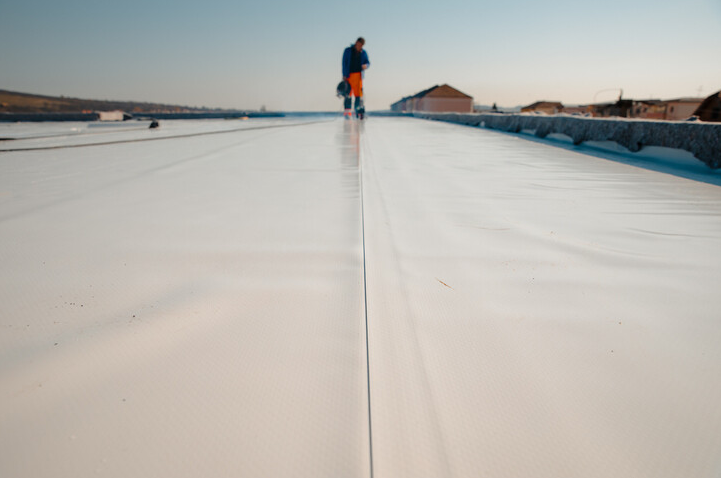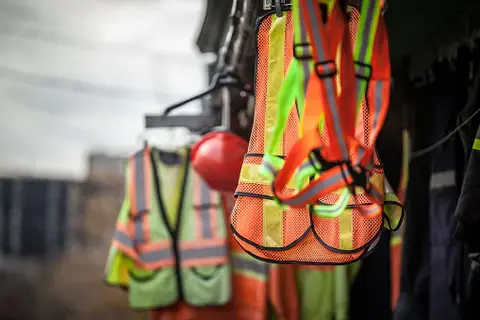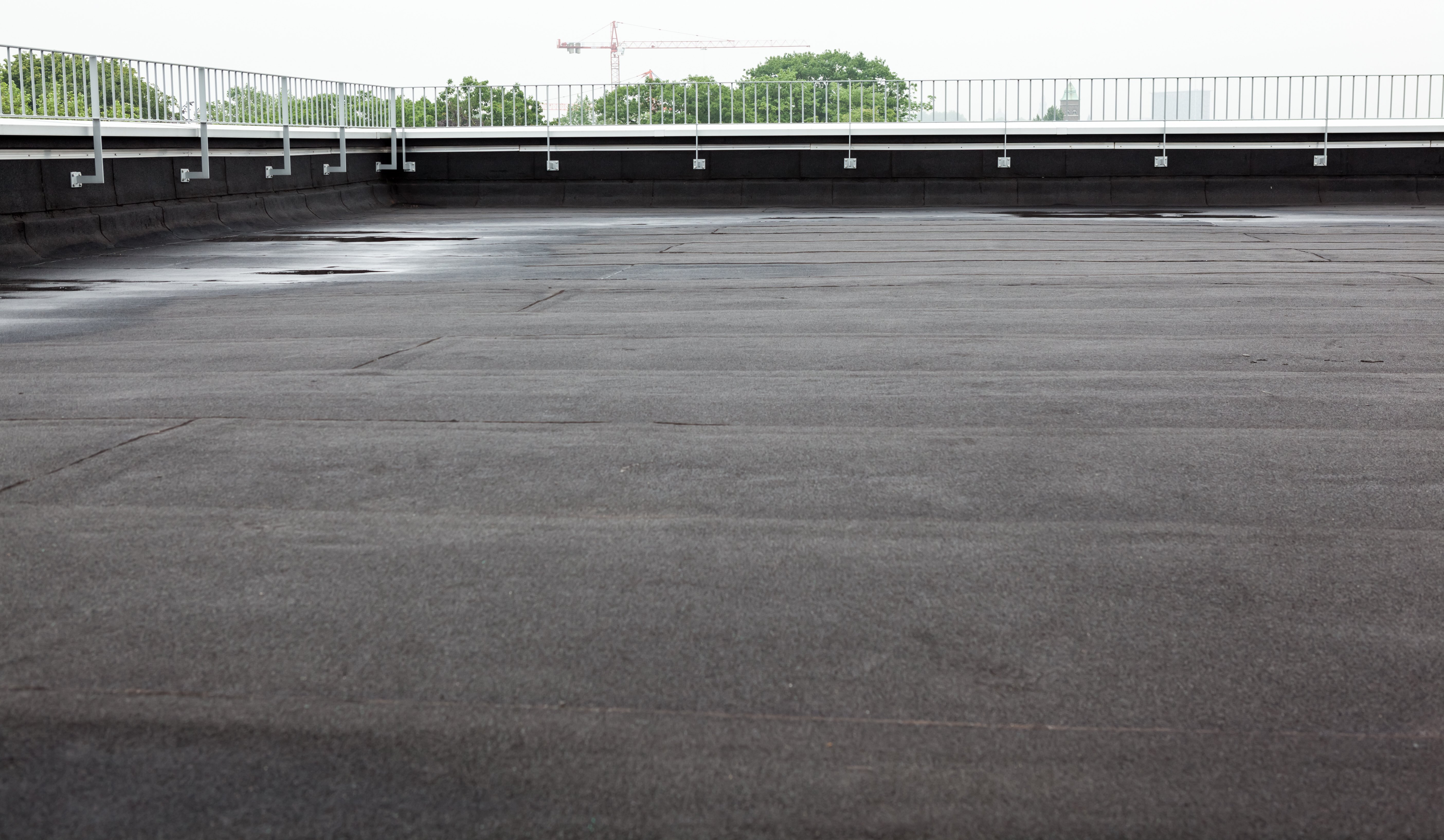Roofing Renovation Decisions: Repair or Replace Your Commercial Flat Roof?
Understanding the signs of wear, evaluating the extent of damage, considering cost implications, and futureproofing your investment are all crucial factors to consider. In this blog post, we will delve into the critical decision-making process surrounding roofing renovation for commercial flat roofs. By examining these key considerations, property owners can make informed choices that will ensure the longevity and integrity of their building.
Understanding the Lifespan and Signs of Wear on Your Commercial Flat Roof
Navigating through the lifecycle of your commercial flat roof is akin to understanding the ebbs and flows of a well-orchestrated system. Typically, these structures hold up for 10-20 years, a duration that hinges significantly on the materials chosen and the maintenance diligence invested. The tell-tale signs of wear—cracks that emerge like fault lines, leaks that betray a breach in defense, the gathering of ponding water acting as unwanted reservoirs, and blistering surfaces telling tales of trapped moisture—are not just indicators but a call to action.
These manifestations of deterioration demand a vigilant eye for early detection. It's this proactive approach that can pivot a minor inconvenience away from evolving into a critical concern. Regular inspections stand as your first line of defense, serving not just as a routine check but as a strategic assessment to fortify your roof’s integrity over time. Addressing these signs promptly can avert the acceleration of damage, effectively extending the roof’s serviceable life.
This landscape of maintenance and vigilance underscores a broader narrative: the importance of not just responding to what's visible, but anticipating what could unfold. It's about charting a course that ensures the enduring performance of your commercial flat roof, safeguarding the asset beneath it and the activities it shelters. Every crack patched, every leak sealed, and every blister smoothed extends a silent nod to the foresight invested in preserving not just a structure, but a critical piece of your commercial entity’s foundation.
Evaluating the Extent of Damage: Repair or Replace?

When standing at the crossroads of deciding whether to repair or replace your commercial flat roof, the process unfolds much like a strategic game, one where the stakes involve the future integrity of your commercial property. It's a decision that requires a deep dive into the current state of your roof, going beyond superficial assessments to understand the core issues at play. Minor damages, for instance, such as small leaks or isolated areas of wear, often lean towards repair – a path that extends the life of your roof without the need for a complete overhaul. This approach is akin to precision surgery, targeting specific problems with a focused solution.
Conversely, when the damage unfurls across a broader canvas – think widespread leaks, significant structural concerns, or pervasive moisture damage – the narrative shifts. Here, the question of replacement takes center stage, presenting itself as a prudent investment in the building's future. Such extensive damage often signals that the roof has reached or is nearing the end of its serviceable life. Opting for replacement in these scenarios isn't merely about addressing the present issues; it's a strategic move towards preempting future problems, thereby ensuring that the building continues to serve its purpose safely and efficiently.
This evaluation process isn't just about weighing the present state against potential future scenarios. It's also about understanding the impact of each choice on the building's overall well-being. Whether opting to repair or replace, the decision should pivot on a thorough understanding of the damage extent, guided by professional assessments, to chart the most prudent course forward.
Cost Considerations: Upfront Expense vs. Long-term Savings
Navigating the financial landscape of roofing renovation demands a nuanced understanding of not only the immediate fiscal impact but also the long-term economic implications. The initial outlay for repairs, while often less daunting, can be deceptive. This path, characterized by its seemingly lower cost barrier, may lead one into a cycle of recurrent expenditures. Each repair, though solving an immediate problem, accumulates over time, subtly inching the overall expense closer to, or in some cases, beyond, the cost of a complete replacement.
On the flip side, the investment in a new commercial flat roof, though substantial at the outset, introduces a narrative of long-term savings and efficiency. This choice is not merely an expense but an investment into the future of the property. A modern roofing system, designed with the latest materials and technology, offers more than shelter; it provides enhanced energy efficiency, reducing cooling and heating costs substantially over its lifespan. Additionally, the longevity of a new roof far surpasses that of repairs, reducing the frequency and necessity for future interventions.
This financial dichotomy between the immediate and future states presents property managers with a strategic decision: opt for the lower upfront cost of repairs with the understanding of potential recurrent expenses, or invest in replacement, leveraging the long-term economic benefits and stability it brings. The wisdom in this choice lies in projecting the future, considering not only the cost today but the savings and advantages that accrue over time.
Futureproofing Your Investment: When Replacement is the Best Option
Embracing the concept of futureproofing your commercial property involves making decisions today that stand to benefit the building's longevity and operational efficiency well into the future. At the heart of such strategic foresight is recognizing when a full replacement of your commercial flat roof transcends being a mere option to becoming the most viable decision. This pivot to replacement is underscored by the promise of embracing modern roofing technologies and materials that are not only more resilient but are designed to enhance the building's energy efficiency.
A new roofing system introduces a myriad of advantages, from improved thermal performance, which can significantly lower heating and cooling costs, to superior resistance against environmental factors that typically degrade roof materials over time. This isn't just about overcoming the present challenges your roof faces; it's a proactive step towards mitigating potential future disruptions, ensuring that your commercial space remains functional, safe, and aesthetically pleasing.
Moreover, the process of replacing your commercial flat roof offers an opportunity to revisit and possibly upgrade the roofing materials and design, aligning them with the latest standards and innovations in the industry. This alignment not only contributes to the operational cost savings but also increases the commercial property’s appeal and value.
In essence, opting for a roof replacement is a forward-looking strategy that prioritizes resilience and sustainability. It's about making a calculated investment in your property's future, ensuring that it continues to thrive and adapt in an ever-evolving commercial landscape.
Selecting the Right Roofing Partner for Your Project
Embarking on a roofing renovation project, whether it's a comprehensive replacement or a targeted repair, hinges on the expertise and reliability of your chosen roofing partner. The quest for the ideal collaborator is not just about filtering through a list of available contractors; it's an exercise in due diligence, ensuring that your project’s leadership embodies a blend of experience, trustworthiness, and a keen understanding of commercial flat roofs. The path to identifying such a partner involves soliciting multiple proposals to compare not just cost but the depth of insight and strategy each potential contractor brings to the table. Insist on exploring their portfolio of completed projects, emphasizing those akin to your property's needs, as this can provide a clear window into their craftsmanship and attention to detail. Licensing and insurance are non-negotiable credentials, serving as foundational pillars of legitimacy and protection. However, the essence of a true partnership extends beyond the paperwork; it's reflected in the willingness to engage in transparent communication, offering clarity and guidance through the complexities of roofing renovation. This collaborative approach ensures that your vision for the project aligns with their execution strategy, setting the stage for a successful renovation that enhances the durability and functionality of your commercial flat roof.
Navigating Warranties and Maintenance Plans

The journey through a roofing renovation culminates in a keen understanding of the warranties and maintenance plans that accompany your newly renovated or replaced roof. These elements act as a safety net, offering assurance and safeguarding your investment against unforeseen complications. Warranties, with their varied terms and durations, underscore a commitment to quality and durability from your roofing partner. They stand as a testament to the confidence vested in the materials used and the workmanship delivered. Equally important is the blueprint for ongoing care encapsulated in maintenance plans. These plans are your roadmap to preserving the roof's integrity, ensuring that the structure remains robust and effective in sheltering your commercial space. They outline periodic check-ups and routine actions required to maintain the roof's optimal condition, effectively mitigating the risk of unexpected repairs and extending the lifespan of your investment. Engaging in detailed discussions with your roofing contractor about these aspects will illuminate the path to maximum protection and performance of your roof, thereby setting a foundation for lasting resilience and efficiency.
Posts by Tag
Recent Posts
Popular Posts
Selecting the appropriate roofing system is...
The decision to embark on a commercial flat roof...
Recent Posts
Ensuring that your roof meets current standards...
As property managers, the last thing we want to...







